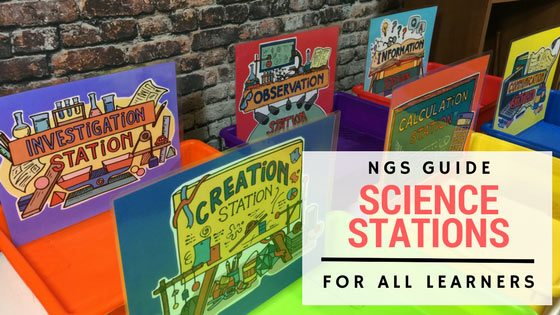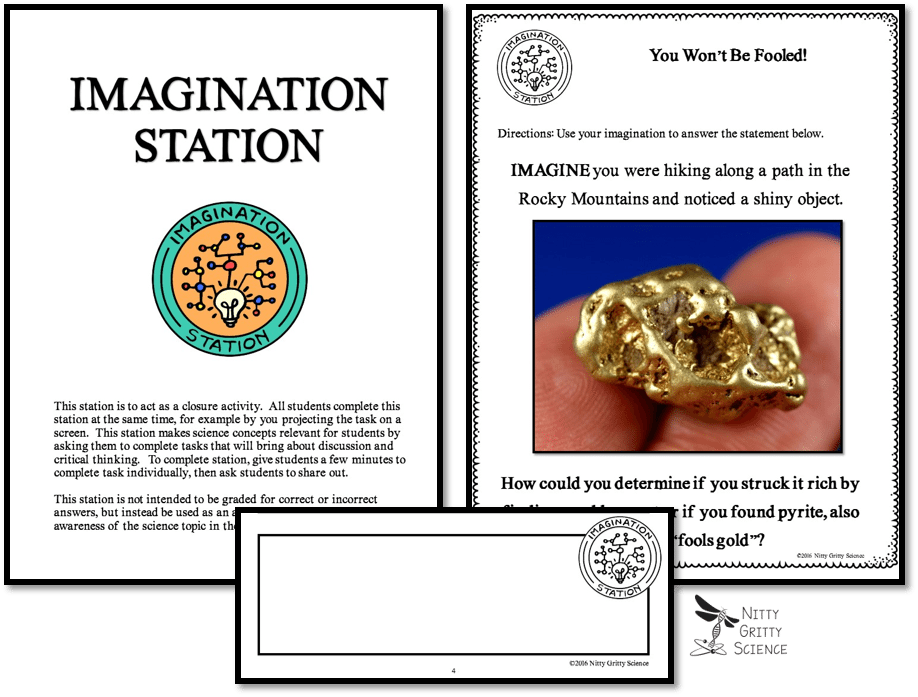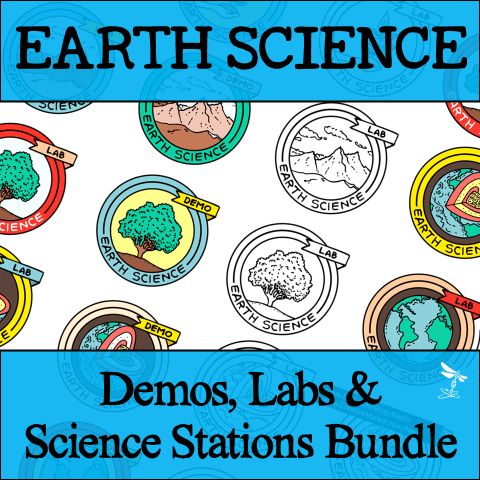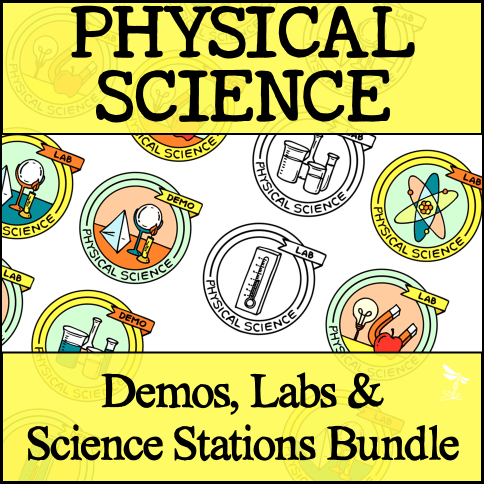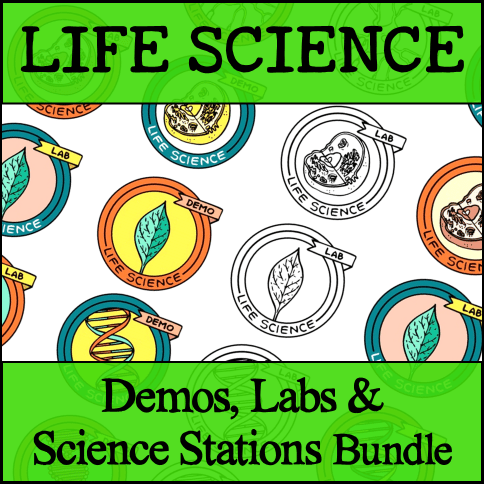If you teach science, you know it’s almost impossible to do without actually having your students experience it first-hand. Science needs to be experienced in all forms to truly appreciate and grasp its concepts.
Nitty Gritty Science curriculum, which is based on the 5 E Model, incorporates the use of Science Stations as the ELABORATION component. I’ve designed my Science Stations to do the following:
- Give students the independence to work at their own pace while digging deeper into the many aspects of the topic.
- Allow the teacher to move from group to group and have mini-meetings and conversations about the students’ findings.
- Vary activities to incorporate different learning styles of students.
- Allow students to explore the topic in more depth and see how it relates to real life.
As we all know, time is precious, and some teachers may feel that using stations takes too much time to prepare, or it’s too confusing for students to follow. They also might feel that if they do it for one unit, it will be too much to create new stations for another unit. Preparing and setting up stations does NOT have to be a struggle!
Preparation and Set-Up
Here is an easy way for you to prepare and set up your different stations:
1. Designate the areas in your classroom for each station. It could be different groups of desks, tables, or locations around the classroom.
2. Determine how many stations you will need. This could vary depending on your lesson.
3. Be sure to have all necessary materials ready at each station. Make sure there are enough supplies and maybe even some extras.
4. Laminate lab signs and directions. With clearly labeled stations, confusion is avoided.
5. Establish rules and expectation. Review frequently until students are familiar with how stations operate.
6. Having a visual timer available keeps students on track and task.
7. Walk the students through the stations, so they know the order in which to follow. Explain the purpose of each station.
I use SEVEN SCIENCE STATIONS in all of my curriculum units. They are the same TYPE of stations for all units. It does not matter what the lesson or topic we are learning; it will work for all stations! By having the same type of stations each time, the students will become familiar with what they have to do and what is expected. This leads to greater independence and a more smoothly run class!
I have broken down my science stations for you and provided a more detailed explanation of each:
- INFORMATION STATION: Students read the passage and answer the corresponding questions in the space provided on their lab sheet. This helps increase their science literacy and deepens their understanding of the science concept. There can be multiple copies of the passage for all group members or one laminated copy so each student can take turns.

- OBSERVATION STATION: Students use what they have learned so far and their general knowledge of the topic to observe and analyze each picture or diagram provided. For each picture or diagram, answer the questions in the space provided on your lab sheet. You will give each group member images, illustrations, or actual samples that show applications or processes of the science topic. They will record what they see on their lab sheet. You can print and laminate the images to keep at this station.
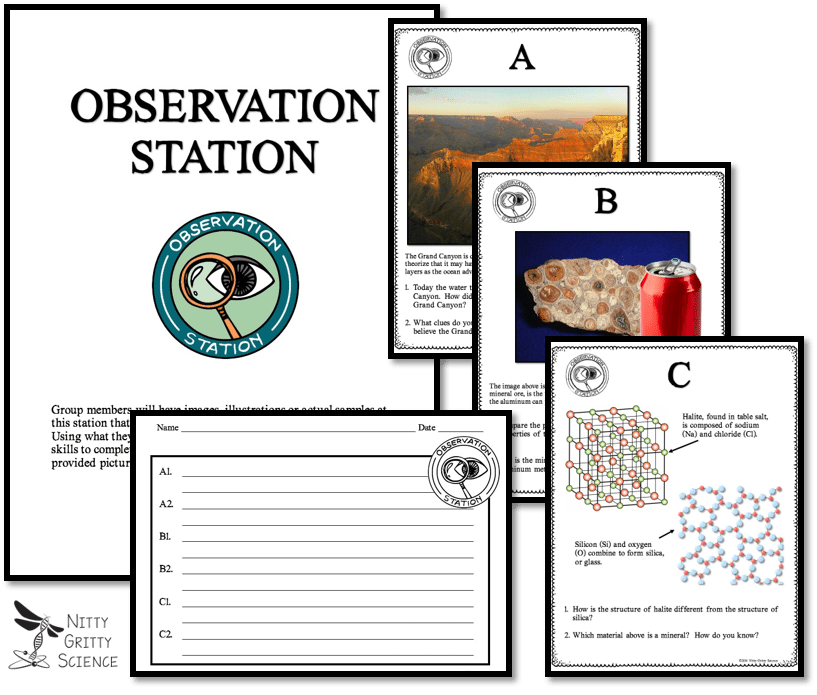
- CALCULATION STATION: Students read the problem to be solved as a group and determine what math skill or equation is needed to solve it. They are to write their answers on their lab sheet. Students will use math skills which include graphing, analyzing data, using models, pattern recognition, measurements, and calculating formulas or word problems.
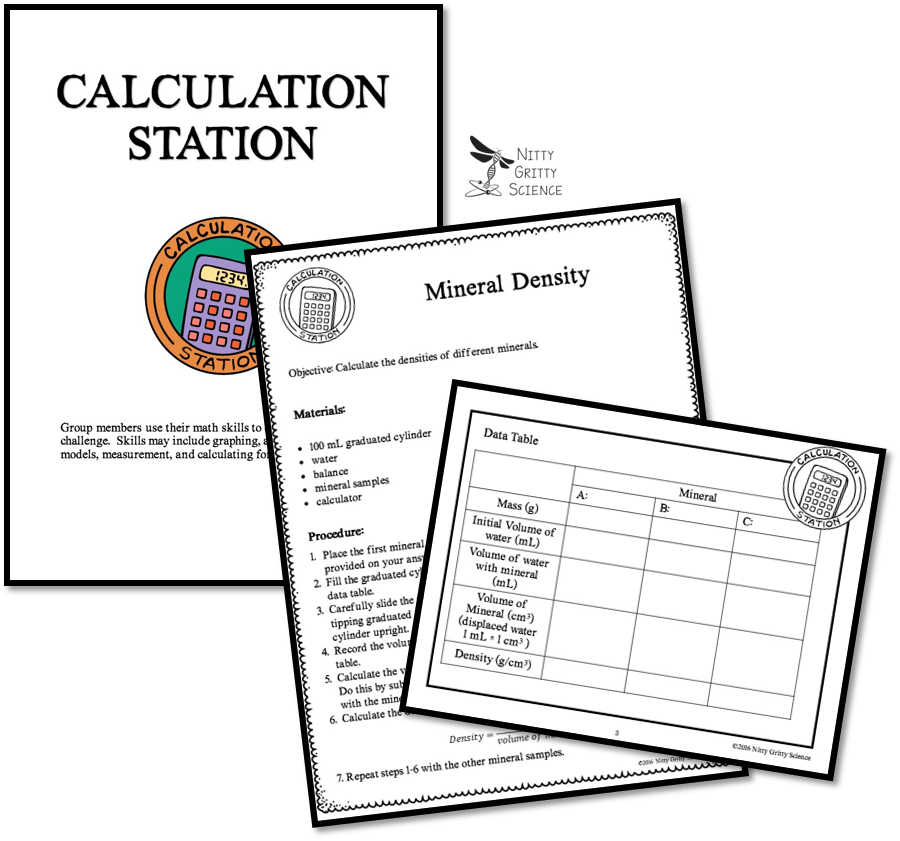
- INVESTIGATION STATION: Students solve a given problem through hands-on activities, working together as a group. To do this, they will need to follow given instructions using inquiry-based skills. Students will need to analyze their data and answer questions based on their results and observations.
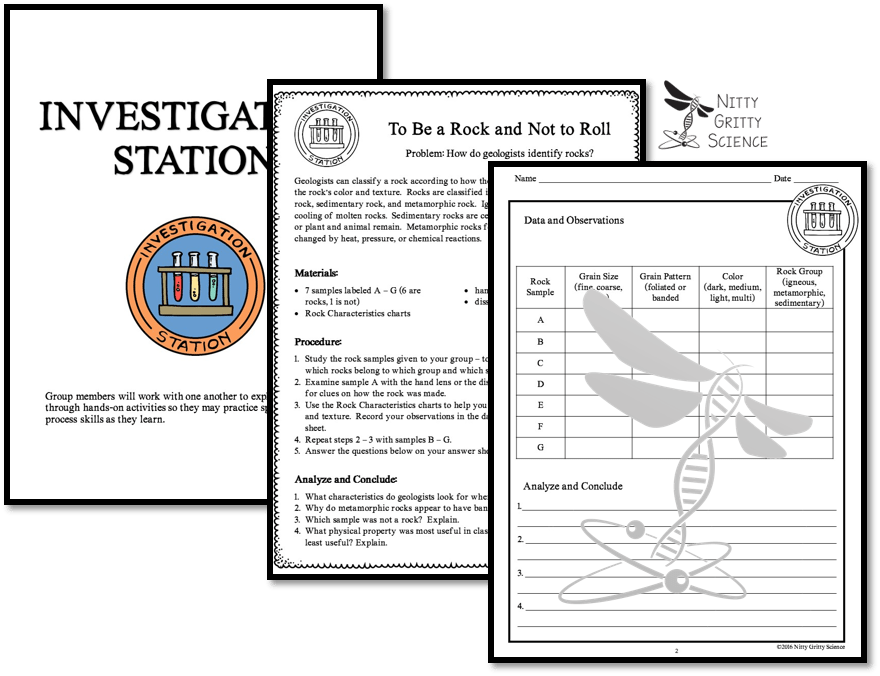
- COMMUNICATION STATION: Students read questions on the topic provided. There are three options your students have to complete this station.
Option A: Newspaper
■ Group members make answers into ‘news-worthy’ columns for their newspaper. They attach their final draft of the “newspaper” to the lab sheet. This is just ONE of the options students have to present their findings.
Option B: Video
■ This option will require you to provide a laptop or video recording device so students can make a video of their answers. You can also allow the use of personal cellphones or tablets to record.
■ At the conclusion of the lesson, you can show the videos to the class. This will give students the motivation to put more effort into their video.
Option C: Interview
■ This option requires you to make question cards with answer keys on the reverse side. Students in groups will each choose a question card and will need to interview the rest of their group members.
■ Teachers have the option of conducting the interview to the group members. This can act as a quick formative assessment method.
- CREATION STATION: This STEM-based station encourages students to work together to solve a challenge. Since this station involves STEM (Science, Technology, Engineering, Math), students are required to create models or designs that demonstrate their understanding of the topic being taught. Students can test their designs at the station, or as a whole class, which is an option determined by the teacher.
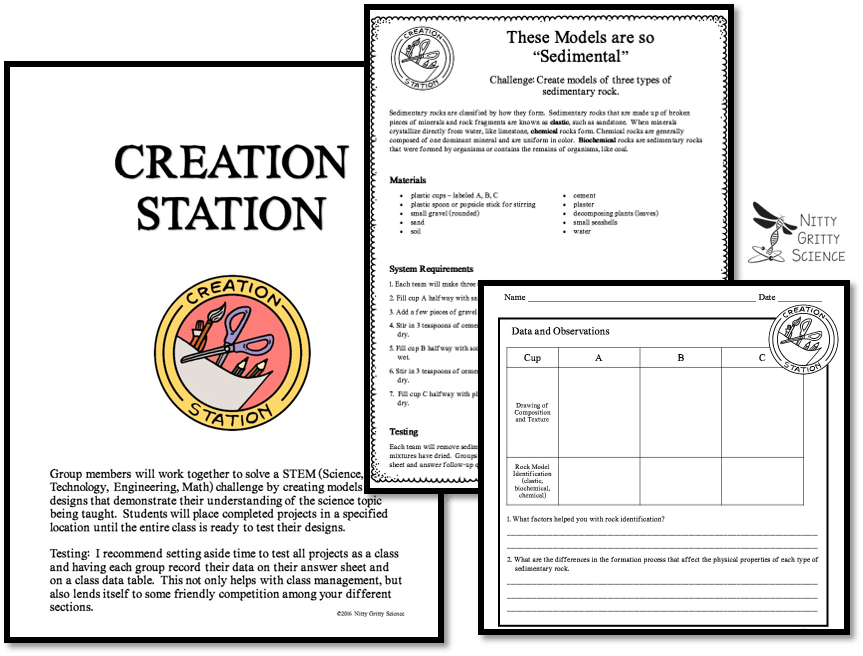
- IMAGINATION STATION: This station relates the science topic to the students’ lives. You can create this station in two ways:
If you haven’t already, check out Demos, Labs and Science Station bundles by Nitty Gritty Science – available for Earth Science, Life Science, and Physical Science.
All Nitty Gritty Science Station Bundles include station signs, which are available in color and black and white options, all paper materials necessary for each station which include:
- direction cards
- material list
- activity instructions
- pictures
- student answer sheet
- teacher guide
- answer key
You will have EVERYTHING you need to run a fun and successful science station lesson!
Good luck and enjoy!
Erica

